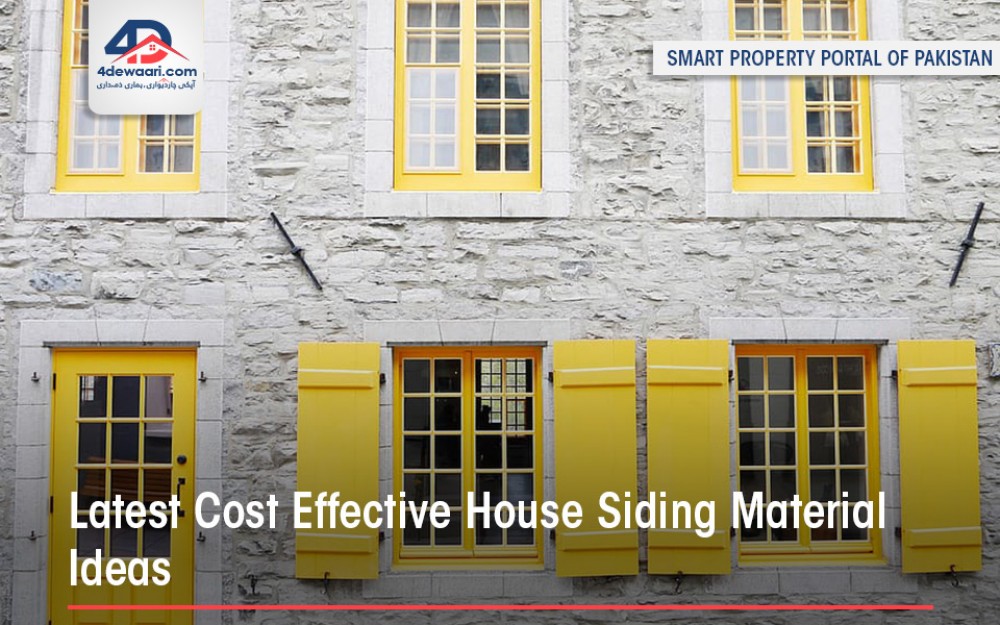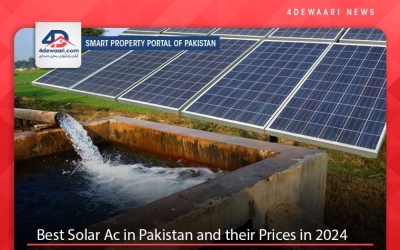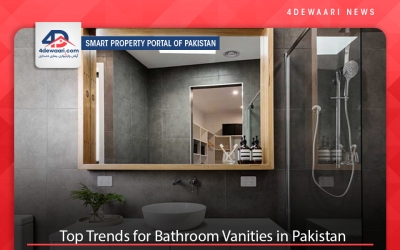Most Durable and Cheap Exterior House Siding Material Ideas
Exterior Siding, commonly referred to as siding functions as the protective "skin" of a house by protecting the interior and structural parts of the home from different outside elements. Often, the Exterior House Siding is made up of several layers, including a wall's outer surface, a plastic wrap to keep out moisture, insulation, and vapor barriers, etc. Plastic, sheet siding, and brick are the most commonly used exterior siding materials. In Many Modern Small House Decorations and also in all other trends, modern-day construction materials offer several different Exterior Siding Options and you can opt for any of them given your budget and weather friendliness. You might not be very aware of these ideas but you need not panic as we have compiled a few of them for you.
Below, we have put together some of the best types of siding for a house and their respective pros and cons so that you can have a better idea of all of them and choose the one that best suits your needs. Starting with brick siding:
Brick Siding
Bricks Sidings are one of the most commonly used materials for exterior siding in every part of the world and Pakistan in particular. Besides being beautiful, bricks are easy to find, and it has also been around for a longer time serving quite efficiently.
Pros And Cons: Talk of the merits, brick siding is sourced from natural materials, namely, clay soil that has been burned in kilns to form bricks. Bricks don't need any exterior painting, and they can last for a lifetime. Also, bricks offer a thermal mass that can be used to capture heat for passive solar homes. The space between the wall sheathing and the exterior brick siding also provides added insulation to the house making it the best pick. Additionally, it is said that these bricks can vastly reduce carbon emissions associated with the building industry as well.
The main environmental drawback (not financial though) of brick siding is the enormous energetic cost needed to make the bricks as it adversely affects the environment. Since bricks are burned in kilns, vast amounts of energy are used to make bricks.
Vinyl Siding
Vinyl Siding is the most commonly used exterior siding on new homes these days. Vinyl is a type of plastic siding made of polyvinyl chloride (PVC). It often mimics the look of wood grain, providing a similar look to painted clapboard or shingle siding. It is available in various shapes and sizes and is popular due to its affordability, durability, and relatively low maintenance requirements whereby making it a favorite among the lot.
Pros And Cons: Vinyl siding has an extremely long lifespan, routinely lasting for over 50 years with little maintenance. Vinyl is one of the most affordable options. Vinyl siding reportedly consumes less than half the energy and fuel to manufacture than brick siding and therefore does not put many wedges on your pocket.
One of the negative aspects of vinyl siding is that it is sourced from a non-renewable resource polyvinyl chloride (PVC) which makes up vinyl siding, which is a known human carcinogen. Moreover, it can cause serious health problems to people who are exposed to the dioxins during the manufacture and if the PVC material catches fire in the future.
Wood Siding
Wood is undoubtedly an exceptionally versatile building product that has been here for time immemorial. Wood Siding is available in abundant options. It is also available in types and species, from reclaimed wood to cedar, pine, redwood, and many varieties in between. In Pakistan, it is commonly used and the options it provides are quite myriad.
Pros And Cons: One of the chief pluses of wood exterior siding is that it comes from a renewable resource. There are several ways to further “green” exterior wood siding options. Charred wood siding and thermally modified wood siding are mostly preferred because it lasts a long time and is resistant to moisture, insects, and mold. You can also create decorative exterior wood siding from reclaimed boards like those from barns. Reclaimed wood can give your home a rugged, traditional look while upcycling wood that would otherwise have been lost.
In Pakistan, these techniques are not used as such rather there are other traditional methods of doing it. Most wood products need to be protected with varnish and other products to withstand the elements and deter bugs such as termites.
Stone Siding
Stone Siding is pieces of quarried stone used as an exterior finish of a house. Stone is a natural material, easy to maintain, and lasts longer than many other siding types, available in many colors easily matching with your Modern Main Gate Designs, therefore preferred in Pakistan especially in rural areas (not the extracted version but simple one). While stone veneer is usually less expensive, natural stone will last roughly twice as long.
Pros And Cons: Real Stone Siding is naturally produced and extremely durable when exposed to the elements and it gives a home an authentic appearance, does not fade, and lasts for decades. It is also resistant to fire, insects, and mold, and it can be recycled at the end of its useful life. The energy or budget required to quarry and process stone is significant but less than cement or steel production.
Real stone siding is expensive especially the extracted ones. If installed incorrectly, can crack, allowing moisture buildup and the potential for mold. Most people go for the extracted version of stones that are not only expensive but the process of extraction is environmentally hazardous. It requires a proper mason to install adding to the cost price.
Lastly, in Pakistan, there are a lot of other options that are preferred as per the context and weather conditions of a particular area. Once you visit the market you get to see myriad options that are different in their quality, durability, and prices. It is your choice and budget that should decide what should be the best material for your house siding. We wish you luck with your choices!















